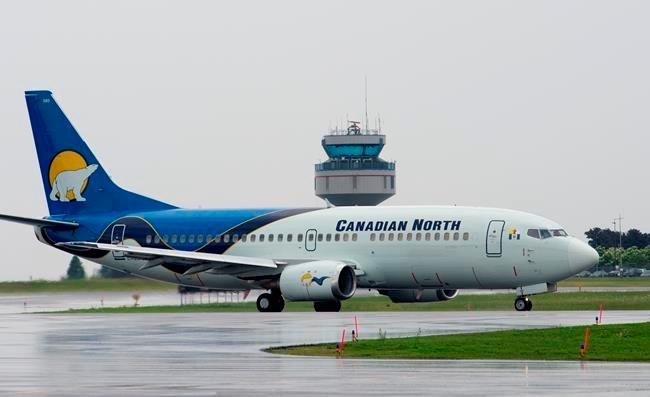YELLOWKNIFE — Airlines that operate in the North — where many residents rely on flights for transportation and goods — say disruptions from the COVID-19 pandemic, a Canada-wide pilot shortage and new fatigue regulations are creating headwinds.
"With the COVID effect, that took a lot of people out of the marketplace," said Michael Rodyniuk, president and chief executive officer of Canadian North. "It's not as attractive as it used to be to become a pilot."
Rodyniuk said new regulations that aim to reduce fatigue-related risks restrict the amount of time crew members can be on the job. He said that means airlines need more flight crews and it's taking longer for pilots to get the needed experience to fly to locations in the High Arctic.
He said Canadian North did about five times the amount of pilot training in 2022 compared to pre-COVID.
"It's a challenge for us to meet the market demand given some of the new regulations that are coming into place," he said.
"For the vast majority of the year, the only way to get goods and people in and out of the North is by air, so our role is vital to the survival of the people of the North."
Rodyniuk said the airline hasn't had to cancel any destinations or significantly reduce flight volumes, but there have been cases where limits on duty time have resulted in delays.
Major airlines have reduced flights across Canada, including in the North, as they're unable to keep up with the resurgence in demand since the lifting of pandemic restrictions and facing staff shortages.
Air Canada suspended flights connecting Yellowknife to Edmonton and Calgary last year, but said it intends to resume Edmonton flights in May. Canadian North started daily non-stop service between Yellowknife and Calgary on Feb. 14.
Joe Sparling, president and chief executive officer of Air North, also raised concerns about how the new fatigue rules could hamper airlines' ability to deal with challenges such as weather disruptions.
"We feel like we're trying to deal with these things with one hand tied behind our backs," he said.
Sparling, whose airline has also not needed to reduce or cancel any flights, said pilots who get training and work in the North tend to move on to southerncarriers.
"I think northern operators are going to have to become more aggressive in the job market," he said. "We're going to have to reach out to northern kids and encourage them to take up aviation as a career, not just as pilots but maintenance engineers."
Robert Wickins, a pilot and flight instructor with the Terry Harrold School of Aviation in Fort Smith, N.W.T., said it can be difficult to attract and retain pilots in the North due to the lack of services compared to large cities.
He said financial incentives and other supports are needed to keep pilots in the North, where there are also benefits to working. He said the flight school is unique as it also has an airline, Northwestern Air Lease Ltd., where graduates can get experience.
"This is where … guys can get a lot of flying," he said.
A 2018 report by the Canadian Council for Aviation and Aerospace estimated the industry needed to hire 55,000 new workers by 2025 to keep up with projected growth and replace retirees. That included 7,300 new pilots and 5,300 new aircraft maintenance engineers.
The report said the number of domestic graduates will only account for a quarter of those positions. It said the greatest current challenge is the high cost for new commercial pilots combined with historically low starting salaries and non-linear career paths.
Data from Transport Canada indicates the number of commercial pilot licences issued in Canada has significantly declined in recent years An average of 1,116 licenses were issued annually between 2012 and 2019, but 474 licences were awarded in 2020, 293 in 2021 and 238 in 2022.
Tim Perry, Canada president of the Air Line Pilots Association, said the effects of the pandemic, including disruptions to flight schools, have contributed to the issue.
"People considering the career were seeing how fragile it was and how many pilots were out of work and how the whole transportation sector ground to a halt and left transportation workers in a very difficult position," he said.
Perry said entry-level wages have been stagnant and it takes a long time to train pilots. He added airlines that operate in remote parts of Canada can have "cumbersome" schedules.
Perry believes governments, industry and labour organizations, can work together to make the profession more accessible, affordable and desirable. He said that includes supporting flight training in more places, addressing financial barriers for students, improving wages for entry-level workers and attracting northern residents to the sector.
"The aviation sector in Canada is an essential, strategic national resource," he said. "We can't pretend that it's anything less important than that and that means long-term planning, long-term investments."
This report by The Canadian Press was first published March 6, 2023.
This story was produced with the financial assistance of the Meta and Canadian Press News Fellowship.
Emily Blake, The Canadian Press




